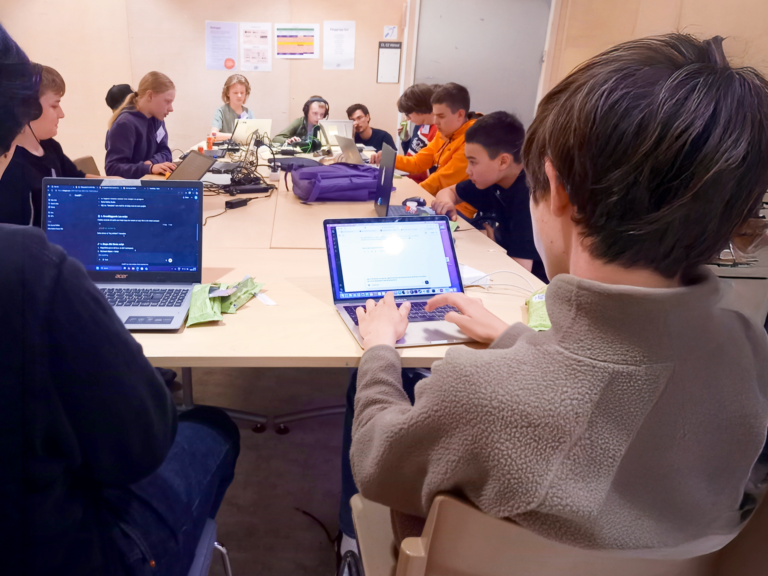Anna Bergstedt, Marketing Manager and Dick Ollas, CEO.
Axentia is the Linköping-based company that has made it their business to ensure that you can do yours. Their market leading techniques for low power consumption displays, creates hassle-free access to real-time information along the public transport network to work or school. Keeping people in motion at a low cost – to a great benefit for the society.
Axentia builds digital displays for bus and tram stops using top-of-the-line low-power technology. The real-time displays are connected to the existing infrastructure, ensuring dependable timetables and easy public travel. In addition, the completely autonomous system runs for several years on batteries and is fully independent of power outages or rampant electricity costs.
The company is progressive in even more ways, for instance by operating the entire development chain within one office building. On the second floor, you’ll find departments for software development, engineering blueprints and mechanical drawings, but also open spaces for product testing and verification. On the floor below, their battery and solar-powered displays are assembled. The few processes that are not done in-house, are kept close with assigned local partners.
– The sheet metal parts, for instance, come from Västervik. Our close-knit production means that we can swiftly and securely adjust to variable needs and meet our customers new demands – all within very tight lead times, says Dick Ollas, CEO.
The premises, which previously housed a restaurant, are now filled with an intricate system of pallets holding sheet metal parts, e-papers, digital displays, and keypads. In the workshop, numerous parts are effectively assembled, packaged, and sent to customers all around Europe.
– When we got access to the new workshop, the office truly was the perfect fit. We all work closely together, engaging all employees and creating a sense of common purpose and direction. The space allows us to work in a sustainable manner. For inspiration and collaborations, we thank the proximity to Linköping University and the energetic business collective Mjärdevi.
Meeting the customers’ needs and exceeding their expectations are important keys to the company’s success. The digital displays that Axentia manufactures use different technologies, E-paper, LCD, RGB-LEDand TFT. Common for all options are the cutting-edge energy efficiency, a display is battery operated for a full 3 years. Add a solar cell and it lasts even longer.
Axentia’s solution supports many common service interface standards, such as the SIRI, GTFS and VDV Interface, and can be customized to non-standard Public Transport Authority interfaces upon request. The displays take mere minutes to install and are virtually maintenance free, radically lowering the total cost of procurement and ownership compared to cabled installations.
In all, the offer is a sustainable, cost-effective, and reliable service for real-time information at all stop-points for bus and tram services across Europe.
– We first imagined that our low-energy, battery-powered products would mean working mainly in rural areas with unreliable power supply. But it turned out the opposite! To gain access to the power grid in the city core, close off streets and open construction sites – that comes with nightmarish logistics and a hefty bill. Then, a solution that lets you avoid all that hassle sounds quite attractive!
Dick points out that the basis for the company’s development lies in the continuous collaboration with Axentia’s customers. In that, you must use equal parts courage and honesty to find the truly effective and sustainable solutions. Usually, traffic controllers share the same challenges, and a successful solution will often spread through the network through word of mouth. Customer relations are nurtured through long-term contracts, that allows Axentia to get into the nitty gritty and gain a deeper understanding for specific needs. Examples are using the brand colors and elements or custom-made installations to fit the current bus or tram stop setup. Installation and maintenance, like battery replacements, are easy and can be carried out by the customers themselves.
With the surge of digitization seen in recent years, the consumer benefit became clear. One point of concern was the development of timetable apps; would people still need the big display when they had the information readily available in the palm? This also turned out to be the opposite. The large and clear displays with reliable, real-time information was not only in demand; it was expected.
– From our experience, it’s not enough to have the technical readiness – to answer the true demands of the public you need a system design that is reliable and flexible as well. That is why our work, development, and assessment, will always be customer centric.












